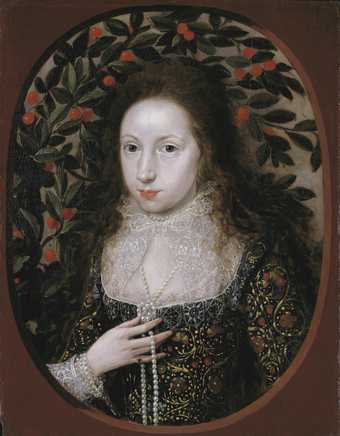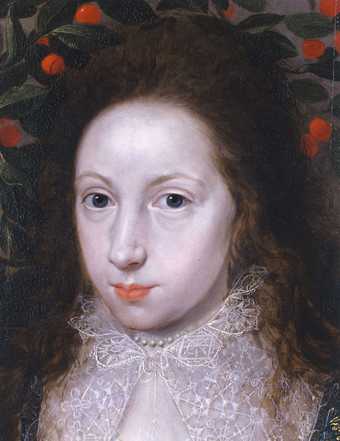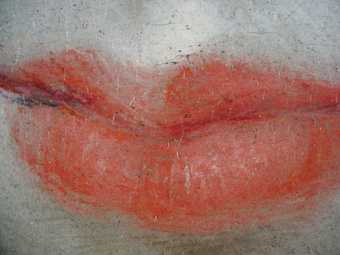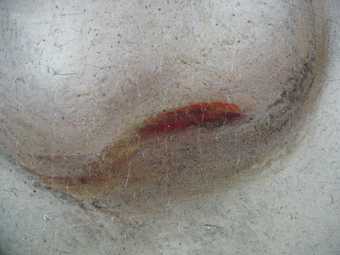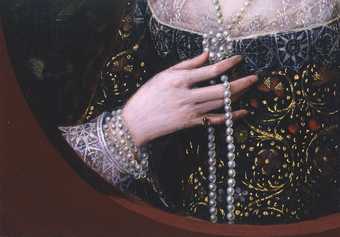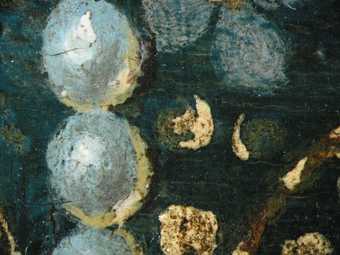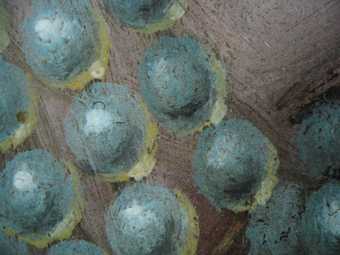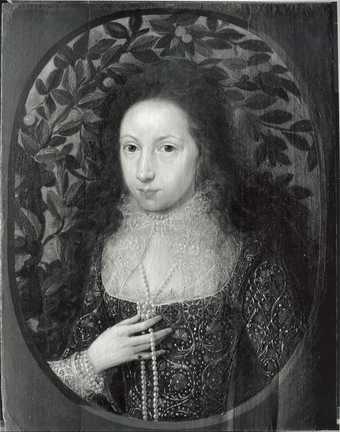The painting is in oil paint on an oak panel measuring 571 x 445 mm (figs.1–2). The panel is composed of three vertical oak boards, each about 8mm thick and tapering markedly in width (fig.3). The top and two upright sides have white ground running over onto their edges; it would appear from the absence of white ground on the bottom edge that one or two millimetres of wood have been trimmed away there. The back of the panel is bevelled on all four sides (fig.4). The panel has a vertical split running from the bottom edge of the right hand member; after repair it was given two oak buttons at the back to strengthen it.
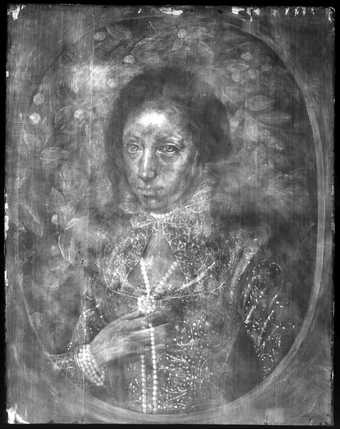
Fig.3
X-radiograph of Lady Anne Pope c.1615
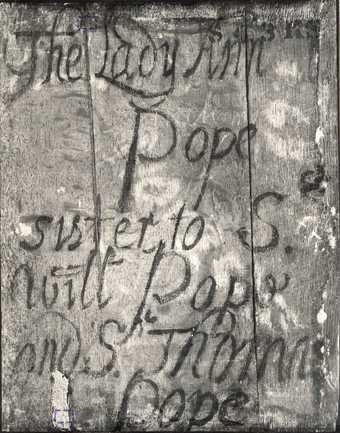
Fig.4
The back of Lady Anne Pope c.1615, photographed in black and white
The left hand board was unsuitable for dendrochronology, as it is of tangential cut.1 Sequences of 121 and 165 years were recovered from the ends of the other two boards, which indicated an earliest felling date of 1583 and a conjectural usage date of 1583–1615.
The ground is made of chalk and glue and is off-white in colour; in close inspection it has a streaky surface. It is covered with cream coloured, thin, brushily applied priming, which becomes very thin and sketchy indeed as it reaches the edges of the panel (figs.5–6).
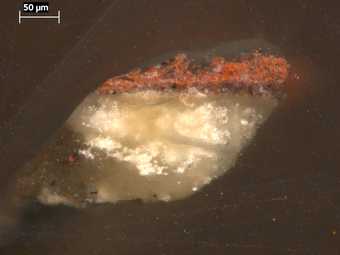
Fig.5
Cross-section through the red oval at the left edge, photographed at x260 magnification. From the bottom: white chalk and glue ground; very thin off-white priming; red underpaint; final coat of red paint
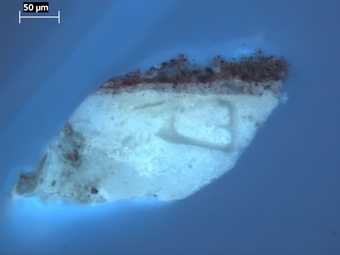
Fig.6
Cross-section through the red oval at the left edge, photographed at x260 magnification in ultraviolet light. From the bottom: white chalk and glue ground; very thin off-white priming; red underpaint; final coat of red paint
With surface microscopy linear underdrawing is visible in the face and hands, and in infrared reflectography broad diagonal lines appear to indicate shadows at the side of the nose and in the bodice (figs.7–11).
In close inspection there would appear to be underdrawing with red lake paint in the hands (fig.12).
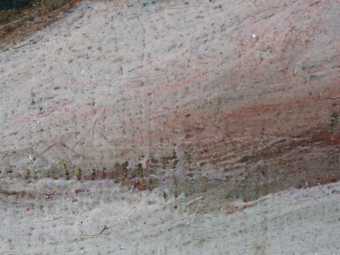
Fig.12
Detail of the fingers at x10 magnification, showing what appears to be underdrawing in red lake paint
Pigments used in the costume are lead white, azurite, lead tin yellow, black, vermilion, smalt (plus glassy particles which appear to act as siccatives), chalk, red lake and earth colours particularly the siennas.2 Flesh tones of the face contain much black pigment, opaque red and red lake to tint the lead white (fig.13). The whites of the eyes contain much blue pigment along with lead white (fig.14) and the blue of the sky is smalt with lead white.
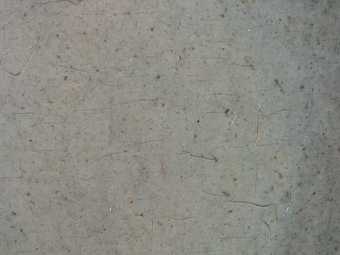
Fig.13
Detail of the right cheek at x10 magnification, showing black, opaque red and red lake pigments in the lead white matrix

Fig.14
Detail of the sitter’s left eye at x8 magnification, showing blue pigments in the white eyeball and a glaze of red lake over the white catchlight
The colours were applied sequentially, starting with thin washes to establish the main areas, followed by denser paint and thicker surface detailing (figs.15–17).
July 2005

